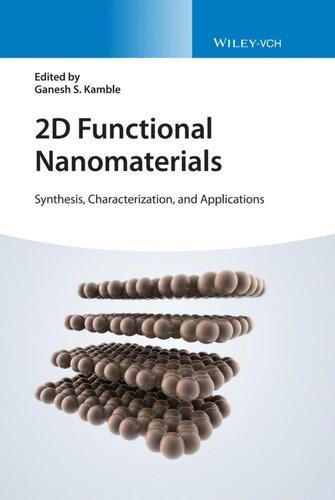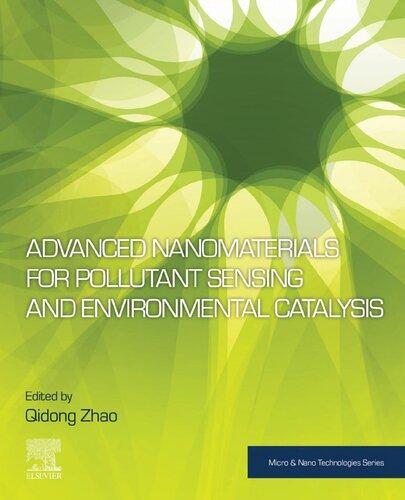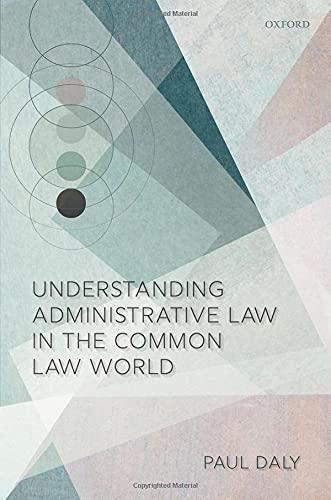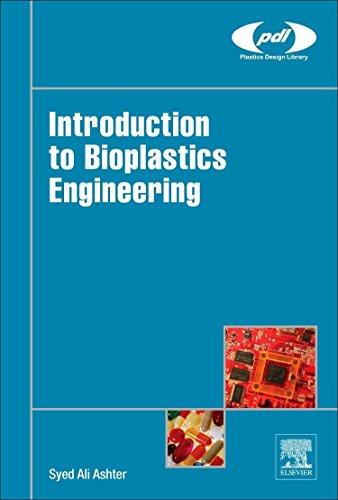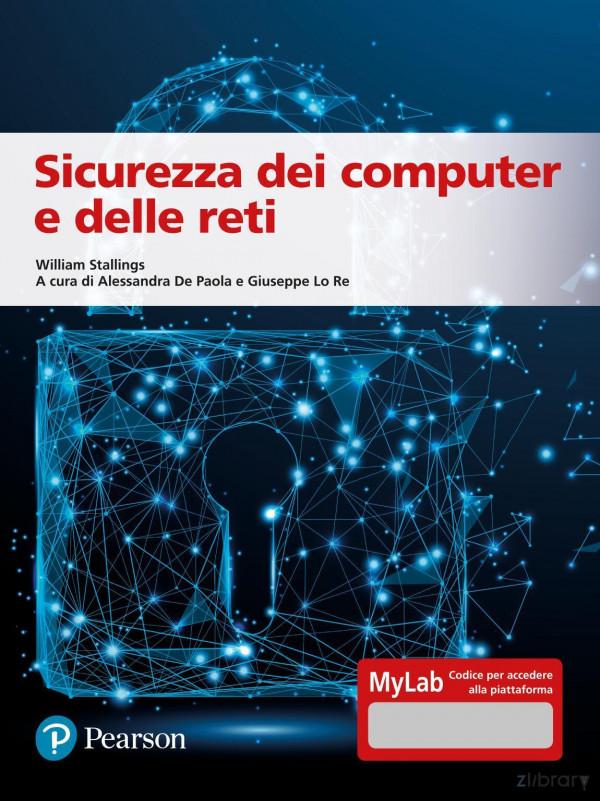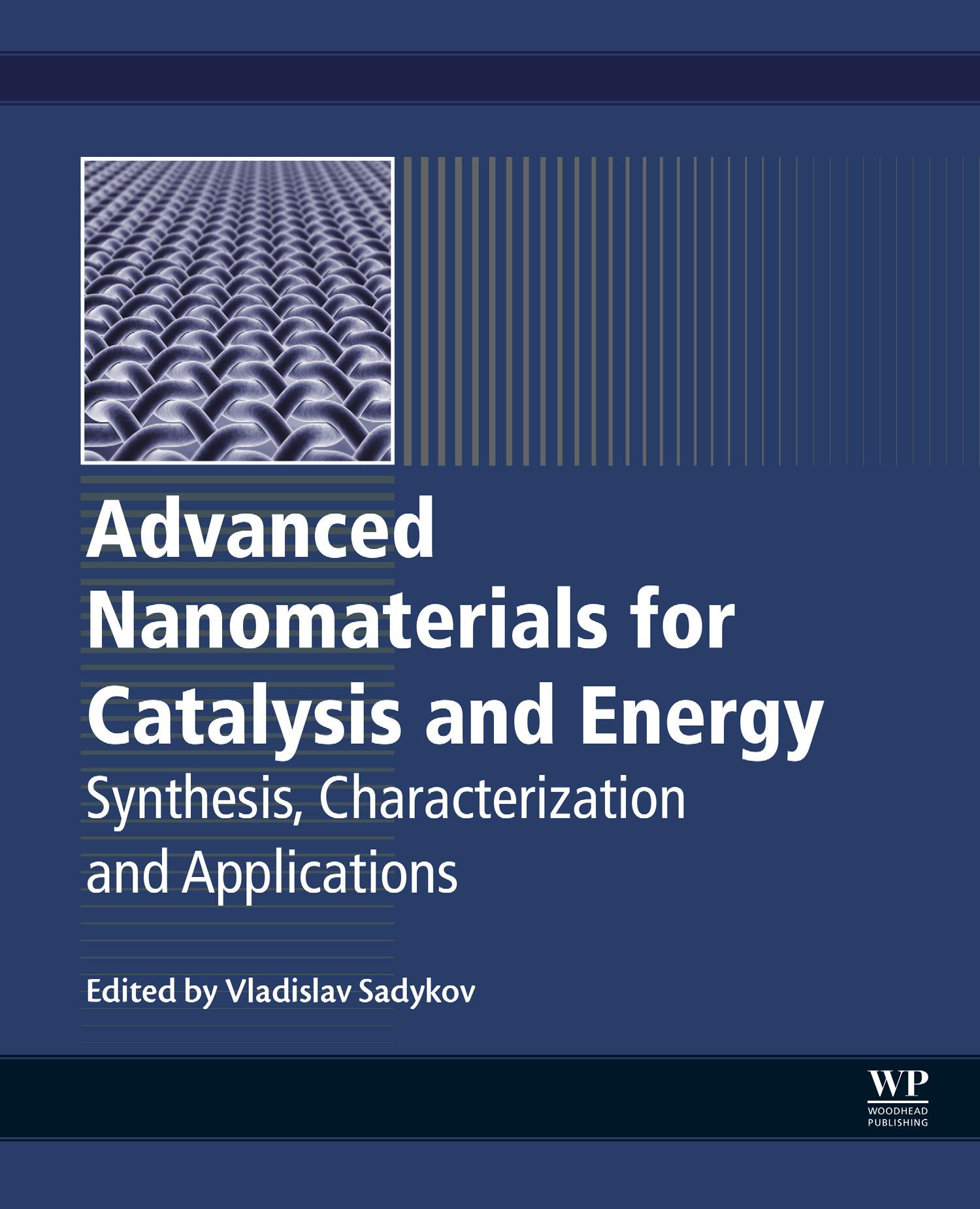AdvancedNanomaterialsfor CatalysisandEnergy
Synthesis,CharacterizationandApplications
Editedby
VladislavA.Sadykov
BoreskovInstituteofCatalysisSBRAS,Novosibirsk,Russia
NovosibirskStateUniversity,Novosibirsk,Russia
Elsevier
Radarweg29,POBox211,1000AEAmsterdam,Netherlands
TheBoulevard,LangfordLane,Kidlington,OxfordOX51GB,UnitedKingdom 50HampshireStreet,5thFloor,Cambridge,MA02139,UnitedStates
Copyright # 2019ElsevierInc.Allrightsreserved.
Nopartofthispublicationmaybereproducedortransmittedinanyformorbyanymeans,electronicormechanical, includingphotocopying,recording,oranyinformationstorageandretrievalsystem,withoutpermissioninwritingfromthe publisher.Detailsonhowtoseekpermission,furtherinformationaboutthePublisher’spermissionspoliciesandour arrangementswithorganizationssuchastheCopyrightClearanceCenterandtheCopyrightLicensingAgency,canbefound atourwebsite: www.elsevier.com/permissions
ThisbookandtheindividualcontributionscontainedinitareprotectedundercopyrightbythePublisher(otherthanasmaybe notedherein).
Notices
Knowledgeandbestpracticeinthisfieldareconstantlychanging.Asnewresearchandexperiencebroadenour understanding,changesinresearchmethods,professionalpractices,ormedicaltreatmentmaybecomenecessary.
Practitionersandresearchersmustalwaysrelyontheirownexperienceandknowledgeinevaluatingandusingany information,methods,compounds,orexperimentsdescribedherein.Inusingsuchinformationormethodstheyshouldbe mindfuloftheirownsafetyandthesafetyofothers,includingpartiesforwhomtheyhaveaprofessionalresponsibility.
Tothefullestextentofthelaw,neitherthePublishernortheauthors,contributors,oreditors,assumeanyliabilityforany injuryand/ordamagetopersonsorpropertyasamatterofproductsliability,negligenceorotherwise,orfromanyuseor operationofanymethods,products,instructions,orideascontainedinthematerialherein.
LibraryofCongressCataloging-in-PublicationData
AcatalogrecordforthisbookisavailablefromtheLibraryofCongress
BritishLibraryCataloguing-in-PublicationData AcataloguerecordforthisbookisavailablefromtheBritishLibrary
ISBN:978-0-12-814807-5
ForinformationonallElsevierpublicationsvisitour websiteat https://www.elsevier.com/books-and-journals
Publisher: JohnFedor
AcquisitionEditor: KostasKIMarinakis
EditorialProjectManager: SerenaCastelnovo
ProductionProjectManager: JoyChristelNeumarinHonestThangiah
CoverDesigner: GregHarris
TypesetbySPiGlobal,India
Chapter1:SynthesisofNano-CatalystsinFlowConditionsUsingMillimixers...........1
ChangdongLi,MaoshuaiLi,AndreC.vanVeen
CaseStudyOne:DesignandOptimizationofMultistageFlowSynthesis ConfigurationstoPrepareZn-CrHydrotalcites......................................................2
1.1.1SynthesisMethodology.......................................................................................3
1.1.1.1Materials.......................................................................................................3
1.1.1.2FlowSynthesisConfiguration......................................................................4
1.1.1.3ComparativeCo-PrecipitationMethod........................................................7
1.1.1.4CharacterizationMethods............................................................................8
1.1.1.5PropertiesofCo-PrecipitationMadeasComparativeMaterials.... ............8
1.1.2PropertiesofMaterialsMadebyFlowSynthesis..............................................9
1.1.2.1EffectofTotalAgingTime(CoilTime).....................................................9
1.1.2.2EffectsofTemperatureandBoreSizeofMillimixer...............................13 1.1.3Conclusions.......................................................................................................18
CaseStudyTwo:PreparationofthePrecursorforBa0.5Sr0.5Co0.2Fe0.8O3 δ PerovskitesandComparisonofPerformanceinaMembraneApplication................20
1.2.1SynthesisandCharacterizationofMaterials....................................................21
1.2.2ComparisonofOxygenPermeationPerformances..........................................25
Chapter2:InfluenceofHydrodynamicsonWetSynthesesofNanomaterials...........29 NicholasJose,AlexeiLapkin
2.2.2ExperimentalStudies........................................................................................36
2.3Flow-InducedStructuring....................................................................................41
2.3.1Theory...............................................................................................................41
2.3.2ExperimentalStudies........................................................................................46
2.4MolecularClustering:Nucleation,Crystallization,andPolymorphism.............50
2.5Conclusions..........................................................................................................53
Chapter3:AdvancedSize-SelectedCatalystsPreparedbyLaserElectrodispersion...61 TatianaN.Rostovshchikova,EkaterinaS.Lokteva,ElenaV.Golubina,KonstantinI.Maslakov, SergeyA.Gurevich,DenisA.Yavsin,VladimirM.Kozhevin
3.1Introduction..........................................................................................................61
3.2PrinciplesofLEDMethodfortheSynthesisofMetalNanoparticles................62
3.3LEDMetal-ContainingSystemsinCatalysis......................................................70
3.3.1CopperCatalysts...............................................................................................70
3.3.2NickelCatalystsonCarbonandOxideSupports............................................75
3.3.3Palladium-ContainingCatalysts.......................................................................82
3.3.4BimetallicMaterials.........................................................................................86
3.4Discussion:TheReasonsofHighCatalyticEfficiencyofLEDSystems.... ......89
Chapter4:RutheniumNanomaterials:AnOverviewofRecentDevelopments inColloidalSynthesis,Properties, andPotentialApplications ................................99 IrinaL.Simakova,DmitryYu.Murzin
4.1Introduction........................................................................................................100
4.2Surfactant-AssistedRoutesforNPsPreparation...............................................101
4.2.1MicroemulsionTechnique..............................................................................101
4.2.2 СolloidalMethod............................................................................................103
4.3PreparationofSupportedMetalCatalystsontheBasisofColloidalNPs.......110
4.3.1DepositionofNPsFromME.........................................................................110
4.3.2ImmobilizationofNPsFromColloids..........................................................111
4.4RoleofaProtectingAgent................................................................................111
4.5RuNPsApplicationinCatalysis.......................................................................114
4.5.1CatalyticApplicationofRuNPsPreparedbytheME.................................116
4.5.2CatalyticApplicationofRuNPsPreparedbyColloidalSynthesis..............117
4.5.3CatalyticApplicationsofRuNPs..................................................................118
4.5.4ExamplesofCatalyticApplicationsofSupportedColloidal RuNPs............................................................................................................125
4.6ConcludingRemarksandOutlook.....................................................................133 Acknowledgments.....................................................................................................134 References.................................................................................................................135
Chapter5:Ag-ContainingNanomaterialsinHeterogeneousCatalysis: AdvancesandRecentTrends............................................................................143
OlgaV.Vodyankina,GrigoryV.Mamontov,ValeryV.Dutov,TamaraS.Kharlamova, MikhailA.Salaev
5.1Introduction........................................................................................................143
5.2SurfaceChemistryofAg-BasedMaterialsinOxidationCatalysis..................145
5.2.1Silver-OxygenInteractions.............................................................................145
5.2.2EffectofPromotersonReactivityofActiveSpeciesonAgSurface...........148
5.2.3Silver-SupportInteractions.............................................................................149
5.2.4Structure-ActivityRelationship......................................................................159
5.3ConcludingRemarksandOutlook.....................................................................164 Acknowledgment.......................................................................................................165 References.................................................................................................................165
Chapter6:HowDoestheSurfaceStructureofNi-FeNanoalloysControl CarbonFormationDuringMethaneSteam/DryReforming?................................177 StavrosAlexandrosTheofanidis,HildePoelman,GuyB.Marin,VladimirV.Galvita
6.1Introduction........................................................................................................177
6.1.1MethaneReformingProcesses.......................................................................177
6.1.2CarbonFormation...........................................................................................180
6.2SynthesisofNi-FeCatalysts..............................................................................181
6.3RoleofFe...........................................................................................................181
6.3.1StructuralFeaturesofNi-FeNanoalloys.......................................................183
6.3.2ActivityDuringMethaneDecomposition......................................................184
6.3.3ActivityDuringMethaneReforming.............................................................188
6.3.4RegenerationAbility......................................................................................191
6.3.5ControlofCarbonFormationonNi-FeNanoalloyCatalysts.......................193
6.3.6CarbonRemovalFromNi-FeNanoalloyCatalysts.......................................196
6.4NovelFe-ModifiedMagnesiumAluminateSupportforControlof CarbonFormation..............................................................................................209
6.4.1MgFexAl2 xO4 Synthesis...............................................................................209
6.4.2StructuralandTexturalFeaturesofMgFexAl2 xO4 Support.......................209
6.4.3Ni-FeNanoalloySupportedonMgFexAl2 xO4 ............................................212
6.4.4StabilityandCarbonFormationofNi-FeNanoalloySupportedon MgFexAl2 xO4 ...............................................................................................215
6.5ConcludingRemarksandOutlook.....................................................................217 References.................................................................................................................218
Chapter7:RecentApplicationsofNanometalOxideCatalystsinOxidation Reactions.......................................................................................................227 V.CortesCorbera´n,V.Rives,V.Stathopoulos
7.1Introduction........................................................................................................228
7.1.1OxideCatalysts:SpecificFeatures................................................................228
7.1.2ScopeoftheChapter......................................................................................229
7.2SynthesisMethodsforNanoscaleandMorphology..........................................230
7.3Ceria-BasedSystems..........................................................................................231
7.3.1PureCeria.......................................................................................................231
7.3.2BinaryCe ZrOxides...................................................................................233
7.3.3BinaryCuO CeO2 Catalysts........................................................................236
7.3.4BinaryMn CeOxides..................................................................................240
7.3.5BinaryCo CeOxideCatalysts....................................................................242
7.3.6OtherMixedOxideCatalysts.........................................................................244
7.4Co,Mn,andFeOxide-BasedSystems..............................................................247
7.4.1Cobalt-BasedSystems....................................................................................247
7.4.2Iron-BasedSystems........................................................................................255
7.4.3Manganese-BasedCatalysts...........................................................................258
7.5OtherOxide-BasedSystems..............................................................................265
7.5.1VanadiumOxide-BasedCatalysts..................................................................265
7.5.2MolybdenumOxide-BasedCatalysts.............................................................268
7.5.3Titania-BasedCatalysts..................................................................................271
7.5.4NickelOxide-BasedCatalysts........................................................................273
7.5.5CopperOxide-BasedCatalysts......................................................................274
7.5.6ChromiumOxide-BasedCatalysts.................................................................276
7.5.7MiscellaneousOxideCatalysts......................................................................277
7.6ConcludingRemarksandOutlook.....................................................................279 References.................................................................................................................281
Chapter8:Particle-SizeEffectinCatalyticOxidationOverPtNanoparticles........295 AlexandrYu.Stakheev,DmitryA.Bokarev,IgorP.Prosvirin,ValeriiI.Bukhtiyarov
8.1Introduction........................................................................................................295
8.2TotalAlkaneOxidation......................................................................................296
8.2.1ParticleSizeEffectandOxygenCoverage...................................................296
8.2.2OxidationofPtNanoparticles........................................................................302
8.2.3EffectofPtOx FormationonCatalyticActivity............................................304
8.2.4PtOx FormationUponReactionConditions..................................................305
8.3ParticleSizeEffectinCOOxidation................................................................308
8.4ParticleSizeEffectinNOOxidation................................................................310
8.5Conclusions........................................................................................................314
Chapter9:NovelZeoliteCatalystsforMethanoltoHydrocarbon Transformation..............................................................................................321 EvgenyRebrov,GuannanHu
9.1Introduction........................................................................................................321
9.2ReactionMechanism..........................................................................................323
9.3SynthesisofZSM-5CoatingsonStructuredSubstrates...................................327
9.3.1SynthesisofMicroporousZeolites................................................................327
9.3.2CatalystStability............................................................................................333
9.3.3Ion-Exchange..................................................................................................337
9.3.4HierarchicalH-ZSM-5Structure....................................................................340
9.4MTHProcess......................................................................................................346
9.5ConcludingRemarksandOutlook.....................................................................348
Chapter10:SemiconductorPhotocatalystsBasedonNanostructured
Cd1 xZnxSSolidSolutionsintheReactionofHydrogenEvolutionFrom AqueousSolutionsofInorganicElectronDonorsUnderVisibleLight.... ...............
EkaterinaA.Kozlova,ValentinN.Parmon
10.1Introduction......................................................................................................357
10.2SynthesisandPhotocatalyticPropertiesofCd1 xZnxSSolidSolutions........360
10.2.1CharacteristicsoftheCd1 xZnxSSamples...............................................361
10.2.2TheKineticsofPhotocatalyticHydrogenEvolution................................364
10.3TheSynthesisofCompositeMaterialsContainingCdSorCd1 xZnxSand ConductorsWithaWiderBandGap...............................................................366
10.4DepositionofCocatalystsontheCadmiumSulfideSurface..........................371
10.4.1DepositionofCopperSulfideontheCd0.3Zn0.7SSurface.......................373
10.4.2SynthesisandStudyofCu/Cd0.3Zn0.7SandCu(OH)2/Cd0.3Zn0.7S Photocatalysts.............................................................................................378
10.4.3SynthesisofNiS/Cd0.3Zn0.7S,NizCd0.3Zn0.7S1+ z,Ni/Cd0.3Zn0.7S,and Ni(OH)2/Cd0.3Zn0.7SPhotocatalysts..........................................................379
10.4.4SynthesisandStudyofAu,Pt,Pd/Cd0.3Zn0.7SPhotocatalysts.... .382
10.5SynthesisofCatalystsWithCadmiumSulfideDepositedonaPorous SupportWiththe3DStructure........................................................................383
Сhapter11:NanocompositeAlkali-IonSolidElectrolytes....................................393 NikolaiF.Uvarov,ArtemS.Ulihin,YuliaG.Mateyshina
11.1Introduction......................................................................................................393
11.2InterfacePhenomenainCSE...........................................................................394
11.2.1PointDefectsonSurfacesorGrainBoundariesofIonicCrystals....... ....394
11.2.2PointDefectsonInterfacesandInterfaceInteraction...............................396
11.2.3SizeEffectsinNanocompositeSolidElectrolytes....................................400 11.3MolecularDynamicsSimulations....................................................................404
11.4EstimationofTransportPropertiesofCSE.....................................................406
11.4.1GeneralApproaches...................................................................................406
11.4.2GeneralizedMixingEquation....................................................................407
11.4.3EstimationofConductivityofCompositesofOtherTypes......................410
11.5TransportPropertiesofAlkaliIonCSE..........................................................412
11.5.1LithiumHalideBasedCSE........................................................................412
11.5.2CSEBasedonOtherAlkaliHalideSalts..................................................414
11.5.3CSEBasedonLi2SO4,Li2CO3,andLi2O................................................415
11.5.4AlkaliNitrateCSE.....................................................................................417
11.5.5CompositesBasedonAlkaliPerchlorates.................................................420
11.5.6CompositesBasedonAlkaliNitrites.........................................................423
11.5.7PolymerandGlass-CeramicComposite Lithium-IonElectrolytes...........426 11.6ApplicationsofAlkali-IonNanocomposteSolidElectrolytes........................426 11.7Conclusions......................................................................................................428
Chapter12:AdvancedMaterialsforSolidOxideFuelCellsandMembrane CatalyticReactors..........................................................................................435
VladislavA.Sadykov,NataliaV.Mezentseva,LyudmilaN.Bobrova,OlegL.Smorygo, NikitaF.Eremeev,YuliaE.Fedorova,YuliaN.Bespalko,PavelI.Skriabin,AlexeyV.Krasnov, AntonI.Lukashevich,TamaraA.Krieger,EkaterinaM.Sadovskaya,VladimirD.Belyaev, AlexanderN.Shmakov,ZakharS.Vinokurov,VladimirA.Bolotov,YuriYu.Tanashev, MikhailV.Korobeynikov,MikhailA.Mikhailenko
12.1Introduction......................................................................................................436
12.2SynthesisandDepositionTechniques.............................................................440
12.2.1MethodsfortheMaterialSynthesis...........................................................440
12.2.2SinteringTechniques..................................................................................442
12.3NovelMethodsofStudyingFunctionalCharacteristicsofMaterials.............444
12.3.1RelaxationTechniques...............................................................................444
12.3.2IsotopeExchangeTechniques....................................................................446
12.3.3TemperatureProgrammedDesorptionofOxygen....................................448
12.4AnodeMaterialsforITSOFCandOxygen/HydrogenSeparation Membranes.......................................................................................................449
12.4.1ExternalReformingforSOFC.CatalystsandReformingChemistry.......452
12.4.2StructuredSubstrates,CatalystsandReactors...........................................458
12.4.3PerformanceofStructuredCatalystsandReactorsinReforming ofRealFeeds..............................................................................................459
12.4.4OxygenSeparationMembranesTests.......................................................465
12.4.5Start-UpCharacteristicsandModeling......................................................470
12.4.6EffectofFuelExternalReforming/PrereformingonSOFCPerformance...472
12.4.7InternalReformingforSOFC.ScreeningTestsofPromoted Ni/YSZCompositesinFuelsSteamReforming.......................................473
12.4.8LayersofPromotedNi/YSZCompositesonAnode/Structured Substrates:PerformanceandStability.......................................................475
12.4.9KineticsofMethaneSteamReforming.....................................................476
12.4.10SOFCTestsWithInternalReforming.....................................................478
12.5CathodeMaterialsforITSOFC......................................................................480
12.5.1PerovskitesandNanocompositesBasedonThem....................................481
12.5.2Ruddlesden—PopperPhases......................................................................490
12.6SolidElectrolytesandOxidesWithaHighIonicConductivityforIT SOFCandPermselectiveMembranes.............................................................492
12.6.1Apatites.......................................................................................................494
12.6.2Ceria—ZirconiaMixedOxides..................................................................495
12.7ConcludingRemarksandOutlook...................................................................499 Acknowledgments.....................................................................................................501
References.................................................................................................................502
Chapter13:MixedIonic-ElectronicConductingPerovskitesasNanostructured Ferroelastics..................................................................................................515
IrinaV.Belenkaya,OlgaA.Bragina,AlexanderP.Nemudry
13.1Introduction......................................................................................................515
13.2MIECPerovskitesasFerroelastics..................................................................518
13.3StudyoftheDomainStructureofBrownmilleriteSrCo0.8Fe0.2O2.5 ..............520
13.3.1TheoreticalConsideration..........................................................................520
13.3.2ElectronMicroscopyStudy........................................................................522
13.3.3DomainReorientationUnderMechanicalLoad........................................526
13.3.4InSituHigh-TemperatureX-RayDiffractionStudiesofthe Dynamicsof“Perovskite-Brownmillerite”PhaseTransitionin SrCo0.8Fe0.2O2.5 ..........................................................................................528
13.4EffectofDopingWithFerroactiveHighlyChargedCationsonthe Structure,PhaseTransitions,andMicrostructureofSrCo0.8 xFe0.2MxO3 δ (M ¼ Nb,Ta,W,Mo).......................................................................................530
13.4.1StudiesoftheStructureandMicrostructureoftheLow-Temperature PhasesSrCo0.8-xFe0.2MxO2.5+ y (M ¼ Nb,Ta;0 < x 0.1)........................531
13.4.2StudyofthePhaseTransition“Perovskite-Brownmillerite”and theStructureoftheHigh-TemperaturePhasesSrCo0.8 xFe0.2MxO3 δ (M ¼ Nb,Ta;0 < x < 0.1)..........................................................................535
13.4.3StudyoftheStructureoftheHTPhaseSrCo0.77Fe0.2Ta0.03O2.5 y WiththeHelpofInSituHigh-TemperatureM€ ossbauerSpectroscopy....539
13.4.4StudyoftheStructureandMicrostructureofSrCo0.8-xFe0.2MxO2.5+ y (M ¼ W,Mo;0 < x 0.2)..........................................................................540
13.4.5NanostructuredFerroelasticsasElectrodeandMembraneMaterialsfor SOFC/CMRWithHighTransportandOperationalProperties...... ......... .544
13.5ConcludingRemarksandOutlook...................................................................548
Contributors
IrinaV.Belenkaya InstituteofSolidStateChemistryandMechanochemistry,SiberianBranchof RussianAcademyofSciences,Novosibirsk,Russia
VladimirD.Belyaev BoreskovInstituteofCatalysisSBRAS,Novosibirsk,Russia
YuliaN.Bespalko BoreskovInstituteofCatalysisSBRAS,Novosibirsk,Russia
LyudmilaN.Bobrova BoreskovInstituteofCatalysisSBRAS,Novosibirsk,Russia
DmitryA.Bokarev ZelinskyInstituteofOrganicChemistryRAS,Moscow,Russia
VladimirA.Bolotov BoreskovInstituteofCatalysisSBRAS,Novosibirsk,Russia
OlgaA.Bragina InstituteofSolidStateChemistryandMechanochemistry,SiberianBranchof RussianAcademyofSciences,Novosibirsk,Russia
ValeriiI.Bukhtiyarov BoreskovInstituteofCatalysisSBRAS,Novosibirsk,Russia
V.CortesCorbera ´ n InstituteofCatalysisandPetroleumchemistry(ICP),CSC,Madrid,Spain
ValeryV.Dutov LaboratoryofCatalyticResearch,TomskStateUniversity,Tomsk,Russia
NikitaF.Eremeev BoreskovInstituteofCatalysisSBRAS,Novosibirsk,Russia
YuliaE.Fedorova BoreskovInstituteofCatalysisSBRAS,Novosibirsk,Russia
VladimirV.Galvita LaboratoryforChemicalTechnology,GhentUniversity,Ghent,Belgium
ElenaV.Golubina ChemistryDepartment,LomonosovMoscowStateUniversity,Moscow,Russia
SergeyA.Gurevich IoffePhysical-TechnicalInstituteoftheRussianAcademyofSciences,St. Petersburg,Russia
GuannanHu SchoolofEngineering,UniversityofWarwick,Coventry,UnitedKingdom
NicholasJose DepartmentofChemicalEngineeringandBiotechnology,UniversityofCambridge, Cambridge,UnitedKingdom;CambridgeCentreforAdvancedResearchandEducationinSingapore Ltd.,Singapore,Singapore
TamaraS.Kharlamova LaboratoryofCatalyticResearch,TomskStateUniversity,Tomsk,Russia
MikhailV.Korobeynikov BudkerInstituteofNuclearPhysicsSBRAS,Novosibirsk,Russian Federation
VladimirM.Kozhevin IoffePhysical-TechnicalInstituteoftheRussianAcademyofSciences,St. Petersburg,Russia
EkaterinaA.Kozlova BoreskovInstituteofCatalysis,Novosibirsk,RussianFederation
AlexeyV.Krasnov BoreskovInstituteofCatalysisSBRAS,Novosibirsk,Russia
TamaraA.Krieger BoreskovInstituteofCatalysisSBRAS;NovosibirskStateUniversity, Novosibirsk,Russia
AlexeiLapkin DepartmentofChemicalEngineeringandBiotechnology,UniversityofCambridge, Cambridge,UnitedKingdom;CambridgeCentreforAdvancedResearchandEducationinSingapore Ltd.,Singapore,Singapore
ChangdongLi UniversityofWarwick,Warwick,UnitedKingdom
MaoshuaiLi UniversityofWarwick,Warwick,UnitedKingdom
EkaterinaS.Lokteva ChemistryDepartment,LomonosovMoscowStateUniversity,Moscow, Russia
AntonI.Lukashevich BoreskovInstituteofCatalysisSBRAS,Novosibirsk,Russia
GrigoryV.Mamontov LaboratoryofCatalyticResearch,TomskStateUniversity,Tomsk,Russia
GuyB.Marin LaboratoryforChemicalTechnology,GhentUniversity,Ghent,Belgium
KonstantinI.Maslakov ChemistryDepartment,LomonosovMoscowStateUniversity,Moscow, Russia
YuliaG.Mateyshina InstituteofSolidStateChemistryandMechanochemistry,SiberianBranchof theRussianAcademyofSciences,Novosibirsk,Russia
NataliaV.Mezentseva BoreskovInstituteofCatalysisSBRAS;NovosibirskStateUniversity, Novosibirsk,Russia
MikhailA.Mikhailenko BudkerInstituteofNuclearPhysicsSBRAS,Novosibirsk,Russian Federation
DmitryYu.Murzin ProcessChemistryCentre,A ˚ boAkademiUniversity,Turku,Finland
AlexanderP.Nemudry InstituteofSolidStateChemistryandMechanochemistry,SiberianBranchof RussianAcademyofSciences,Novosibirsk,Russia
ValentinN.Parmon BoreskovInstituteofCatalysis,Novosibirsk,RussianFederation
HildePoelman LaboratoryforChemicalTechnology,GhentUniversity,Ghent,Belgium
IgorP.Prosvirin BoreskovInstituteofCatalysisSBRAS,Novosibirsk,Russia
EvgenyRebrov SchoolofEngineering,UniversityofWarwick,Coventry,UnitedKingdom; DepartmentofBiotechnologyandChemistry,TverStateTechnicalUniversity,Tver,Russia
V.Rives GIR-QUESCAT,DepartmentofInorganicChemistry,UniversityofSalamanca, Salamanca,Spain
TatianaN.Rostovshchikova ChemistryDepartment,LomonosovMoscowStateUniversity, Moscow,Russia
EkaterinaM.Sadovskaya BoreskovInstituteofCatalysisSBRAS;NovosibirskStateUniversity, Novosibirsk,Russia
VladislavA.Sadykov BoreskovInstituteofCatalysisSBRAS;NovosibirskStateUniversity, Novosibirsk,Russia
MikhailA.Salaev LaboratoryofCatalyticResearch,TomskStateUniversity,Tomsk,Russia
AlexanderN.Shmakov BoreskovInstituteofCatalysisSBRAS;NovosibirskStateUniversity, Novosibirsk,Russia;BudkerInstituteofNuclearPhysicsSBRAS,Novosibirsk,RussianFederation
IrinaL.Simakova BoreskovInstituteofCatalysis,Novosibirsk,Russia
PavelI.Skriabin BoreskovInstituteofCatalysisSBRAS,Novosibirsk,Russia
OlegL.Smorygo PowderMetallurgyInstitute,Minsk,Belarus
AlexandrYu.Stakheev ZelinskyInstituteofOrganicChemistryRAS,Moscow,Russia
V.Stathopoulos LaboratoryofChemistryandMaterialsTechnology,SchoolofTechnological Applications,TechnologicalEducationalInstituteofStereaEllada,Greece
YuriYu.Tanashev BoreskovInstituteofCatalysisSBRAS,Novosibirsk,Russia
StavrosAlexandrosTheofanidis LaboratoryforChemicalTechnology,GhentUniversity,Ghent, Belgium
ArtemS.Ulihin InstituteofSolidStateChemistryandMechanochemistry,SiberianBranchofthe RussianAcademyofSciences,Novosibirsk,Russia
NikolaiF.Uvarov InstituteofSolidStateChemistryandMechanochemistry,SiberianBranchofthe RussianAcademyofSciences,Novosibirsk,Russia
AndreC.vanVeen UniversityofWarwick,Warwick,UnitedKingdom
ZakharS.Vinokurov BoreskovInstituteofCatalysisSBRAS;NovosibirskStateUniversity, Novosibirsk,Russia
OlgaV.Vodyankina LaboratoryofCatalyticResearch,TomskStateUniversity,Tomsk,Russia
DenisA.Yavsin IoffePhysical-TechnicalInstituteoftheRussianAcademyofSciences,St. Petersburg,Russia
Preface
Nanomaterialsnowplaytremendousroleindealingwiththeproblemsofrenewableenergy generationandenvironmentprotectionbeingusedinthedesignofcatalystsforavarietyof relatedchemical/photochemicalprocesses,solidoxidefuelcells,membranesforoxygen/ hydrogenseparation,rechargeablepowersources,solarpanels,etc.Anyprogressinthesefields isbaseduponunderstandingfundamentalfactorscontrollingfunctionalpropertiesofthese materialsdeterminedbytheirchemicalcompositionandreal/atomicstructuredependingon theirgenesisandevolutionduetointeractionwithenvironment.Hence,approaches,methods, andtechniquesofmaterialsscience,surfacescience,reactionkinetics,andengineeringaretobe combinedtodealwiththeseproblemsandachieveapracticalsuccessinthedesignofefficient devises.Mainaspectsofthisconceptareillustratedinpresentedbookbaseduponthe experienceoftheteamofauthorsinframesofabroadinternationalcollaborationpromotedby ECFP6andFP7programs,RussianMinistryofEducationandScience,RussianFundofBasic Research,andRussianScientificFoundation.
AbroadrangeofnanomaterialsconsideredinthisbookincludesRucolloidnanoparticles;Ag, Pt,Pd,Ru,andNinanoparticlesandnanoalloysonavarietyofsupports;simpleoxides(Co3O4, Mn3O4,Fe3O4 andFe2O3,TiO2,CeO2,ZrO2,Cu2O,andrare-earthoxides);mixedoxides (ZrO2-CeO2,dopedceria,dopedzirconia,dopedceria-zirconia,Fe-V-dopedtitania,Zn-Cr hydrotalcites,spinels,perovskites,dopedLasilicateswithapatitestructure,andzeolite H-ZSM-5);supportedoxides(MnO/CeO2,NiO/YSZ,V2O5-WO3 overTiO2 nanotubes,etc.); andnanocomposites(V2O5-WO3 overTiO2 nanotubes,Cd1 xZnxSloadedwithCuSorNiS, perovskite-dopedceriaorzirconiananocompositesforSOFCcathodesandoxygenseparation membranes,alkali-ionconductingcompositesCsCl-Al2O3,etc.).
Advantagesofnewapproachestosynthesisofnanomaterialswerediscussedwithadueregard forsynthesisinflowconditions(includingsupercriticalalcohols);laserelectrodispersionof singlemetalsoralloysoncarbon,silicon,oroxidesupports;mechanochemistry;sonochemical procedures;microwaveorradiation-thermaltreatment;sol-gelroutes;selectiveadsorption ofsilvercationsonoxidesupportsinspecificconditions,etc.Theseproceduresallowtoobtain systemswithanarrowparticlesizedistribution,controlledmetal-supportinteraction,and nanocompositeswithuniformspatialdistributionofdomainsofdifferentphasesevenindense sinteredmaterials.
Specificityoftherealstructureandsurfacepropertiesofnanomaterialscharacterizedby advancedmethods(X-raysynchrotronradiationdiffraction,neutronography,transmission/ scanningelectronmicroscopywithelementalanalysis,solid-statenuclearmagneticresonance, insituhigh-temperatureMossbauerspectroscopy,X-rayphotoelectronspectroscopy, infraredandelectronspinresonancespectroscopiesofadsorbedtestmolecules,etc.)aswell asoftheirtransportpropertiescharacterizedbyimpedancespectroscopyandoxygenisotope heteroexchangewereconsidered.Effectsofnanosystemcomposition,bulkandsurface properties,metal-supportinteraction,redistributionofelementsbetweennanodomainsin metal-oxideandoxide-oxidenanocomposites,particlesizeandmorphology,deposition density,etc.ontheirfunctionalproperties(reactivity,transportcharacteristics,catalytic activity,andreactionmechanism)withadueregardforthehigh-temperaturesintering,catalyst interactionwiththereactionmedialeadingtochangeofthephasecomposition,aging,etc. wereanalyzed.
Thescopeofconsideredcatalyticreactionsincludestransformationoffuelsintosyngasand hydrogen;photocatalyticreactionsofhydrogenevolutionfromaqueoussolutionsofinorganic electrondonorsundervisiblelight;methanol-to-hydrocarbontransformationonzeolite catalysts;totaloxidationofhydrocarbons,formaldehyde,ethanol,CO,andNO;andoxidative dehydrogenationandselectiveoxidationoflightalkanesandoxygenates.Uniquecatalytic propertiesofextremelylow-loaded(lessthan0.01mass%)monometallic(Cu,Ni,andPd)and bimetallic(NiPdandNiAu)systemspreparedbylaserelectrodispersionmethodin isomerization,hydrogenation,hydrodechlorinationreactionsweredemonstrated.For colloid-derivedRuNPs,suchreactionsasCO2 hydrogenationtoformicacid;selective hydrogenationofunsaturatedaldehydes(citral);asymmetricalhydrogenationofaromatic ketonestosecondaryalcohols;hydrogenationofaketogroupofpyruvicacid;hydrogenationof C]OorC]Cbondsinsubstitutedacetophenones,ethylpyruvate,methyl-2acetamidoacrylateand m-methylanisole,andgalactoseandglucosetocorrespondinggalactitol andsorbitol;anddirecthydrogenolysisofcellobioseintopolyolswereshowntobeefficiently catalyzedaswell.
Nanocompositescomposedofcomplexoxides(La-orPr-dopedceria-zirconiasolidsolutions, complexperovskiteLa0.8Pr0.2Mn0.2Cr0.8O3,andtheircombinationswithYSZorNiO/YSZ) promotedbyPt,Ru,Ni,ortheircombination,selectedbyresultsofshort-termscreeningtestsin dilutedfeedsaspromisingcatalystsforthetransformationofgasandliquidfuelsintosyngas, wereshowntoretaintheiractivityandcoking/sinteringstabilitywhensupportedonstructured substrates(metallic,cermet,andceramic)andtestedinrealfeedsathightemperaturesand reagentconcentrationsinpilot-scaleinstallations.Thisisprovidedbytheoptimizationoftheir compositionandpreparationproceduresensuringdevelopedinterfacesbetweencomponents activatingfuelmolecules(NiandNi-Pt/Rualloys)andoxidant(O2,H2O,andCO2)molecules (complexoxideswithperovskiteandfluoritestructures).Nocrackingordetachmentoflayers fromsubstratesafterreactionwasobserved.Forsteamreformingofmethane,themost
promisingresultswereobtainedfornanocompositeactivecomponent La0.8Pr0.2Mn0.2Cr0.8O3 +NiO+YSZpromotedbyRuandsupportedoncompressedNi-Alfoam substrateandcorundumlayerprotectedFecralloygauzes.ForthetransformationofCH4 and liquidfossilfuels(decaneandgasoline)intosyngasviafastselectiveoxidationatshort contacttimesandforoxysteamreformingofbiofuels(ethanolandacetone),themostpromising typeofactivecomponentiscomposedofPr-dopedceria-zirconiasolidsolutionpromotedby LaNi(Pt)O3.Aradial-typereactorcombininglayerscomposedofstructuredheat-conducting catalyticelementsandhigh-surface-areamicrosphericalcatalystsappearstobethemost attractiveforselectiveoxidationoffuelsintosyngasduetointernalheatrecuperation.Basic kineticfeaturesofmethanepartialoxidationandsteamreformingonnanocompositeactive componentswereelucidatedandappliedformodelingofstructuredcatalystperformance inpilotreactors.PerformanceofstructuredcatalystsinCH4 internalreformingmodemeetsthe targetsofSOFCdesignbyarea-specificresistance,activity,andpowerdensity.
FormaterialsusedinthedesignofSOFC,membranes,batteries,etc.,importantroleplayedby domainboundaries/interfaceswasreliablydemonstrated.Thus,foralkali-ionconducting composites,themoststronginterfaceinteractionwasobservedforlithiumsaltsresultinginthe highestionicconductivity,makingthempromisingforthepracticalapplicationsinsolid-state batteriesandsupercapacitors.
ForferroelasticperovskiteswithmixedconductivitysuchasSrCo0.8 xFe0.2MxO3 δ (M ¼ Nb, Ta,W,andMo),promisingaselectrodematerialsforSOFCsandmembranematerials,an increaseinthecompositionaldisorderduetodopingwithferroactivecationsNb/Ta(V)and Mo/W(VI)wasaccompaniedbydiffusingoftheperovskite-brownmilleritephasetransition duetolocaltransformationsintheperovskitematrixwiththeformationofrandomly oriented90° nanosizeddomains.AsignificantdifferenceinthechargeofBcationsupon dopingwithMo/W(VI)resultsinthelocalorderingwiththeformationofdomainswitha doubleperovskitestructure.Nanostructuringresultedinthesuppressionofundesirablephase transitionsandahighdensityofinterfacesbetweencoherentlyjoineddomainsfavorably affectsthethermomechanicalandoxygentransportpropertiesofdopedmaterials.
Innanocompositesofperovskites(dopedmanganites,nickelates,cobaltites,etc.)withsolid electrolytes(dopedceria,zirconia,etc.),enhancedoxygenmobilityalongperovskite-fluorite interfacesandgenerationofnewactivesitesforoxygenexchangeonthesurfaceofthe electrolytedomainsduetocationredistributionmakesuchmaterialspromisingforusinginIT SOFCcathodesandoxygenseparationmembranes.
Ahighpowerdensityofsinglethin-filmfuelcellsintheintermediatetemperaturerangewith nanocompositecathodeswasreached.Asymmetricalsupportedoxygenandhydrogen separationmembraneswithnanocompositepermselectivelayersonNi-Alfoamsubstrate demonstratedpromisingandstableperformance/highpermeationflaxesduetofastionic transportandhighcatalyticactivityofthematerialsconcerned.


